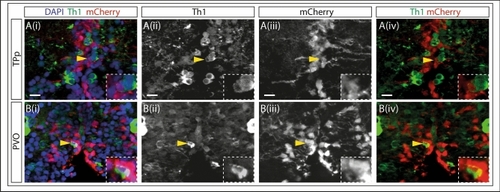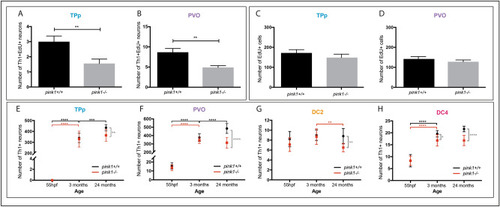- Title
-
PINK1 deficiency impairs adult neurogenesis of dopaminergic neurons
- Authors
- Brown, S.J., Boussaad, I., Jarazo, J., Fitzgerald, J.C., Antony, P., Keatinge, M., Blechman, J., Schwamborn, J.C., Krüger, R., Placzek, M., Bandmann, O.
- Source
- Full text @ Sci. Rep.
|
DA populations in the embryonic and adult zebrafish posterior tuberculum (PT). ( |
|
Expression of Otp and |
|
DA neurons are generated in the PT in adulthood, but generation decreases with age. ( EXPRESSION / LABELING:
|
|
DA neurons in the adult PVO are generated from Her4-expressing progenitors. ( EXPRESSION / LABELING:
|
|
Adult generation of DA neurons is impeded in |
|
Reduced population of Otp+ progenitors in the TPp of PHENOTYPE:
|
|
Impaired dopaminergic differentiation in human |







